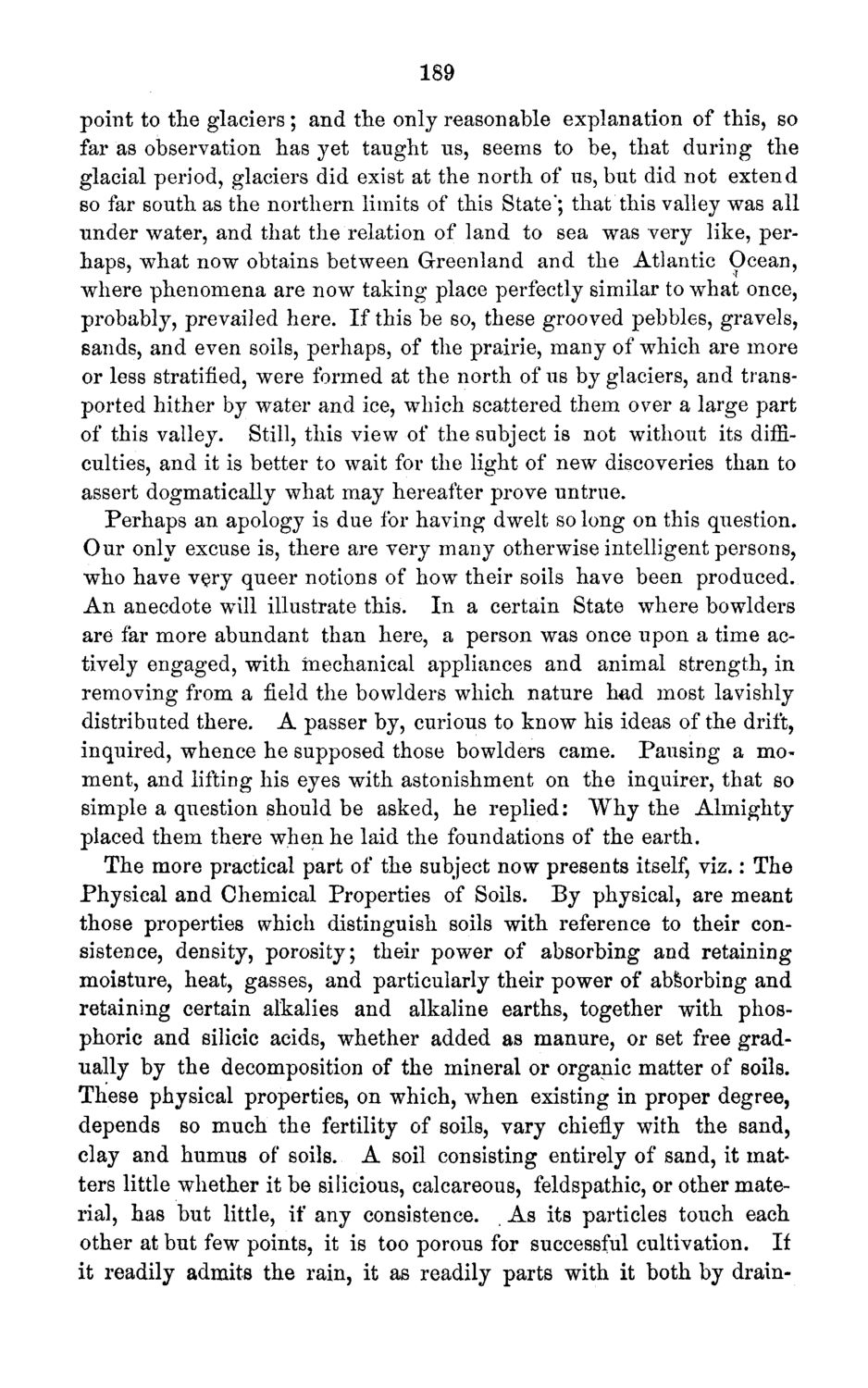| |
| |
Caption: Board of Trustees Minutes - 1871
This is a reduced-resolution page image for fast online browsing.

EXTRACTED TEXT FROM PAGE:
189 point to the glaciers ; and the only reasonable explanation of this, so far as observation has yet taught us, seems to be, that during the glacial period, glaciers did exist at the north of us, but did not extend so far south as the northern limits of this State'; that this valley was all under water, and that the relation of land to sea was very like, perhaps, what now obtains between Greenland and the Atlantic Ocean, where phenomena are now taking place perfectly similar to what once, probably, prevailed here. If this be so, these grooved pebbles, gravels, sands, and even soils, perhaps, of the prairie, many of which are more or less stratified, were formed at the north of us by glaciers, and transported hither by water and ice, which scattered them over a large part of this valley. Still, this view of the subject is not without its difficulties, and it is better to wait for the light of new discoveries than to assert dogmatically what may hereafter prove untrue. Perhaps an apology is due for having dwelt so long on this question. Our only excuse is, there are very many otherwise intelligent persons, who have very queer notions of how their soils have been produced. An anecdote will illustrate this. In a certain State where bowlders are far more abundant than here, a person was once upon a time actively engaged, with mechanical appliances and animal strength, in removing from a field the bowlders which nature had most lavishly distributed there. A passer by, curious to know his ideas of the drift, inquired, whence he supposed those bowlders came. Pausing a moment, and lifting his eyes with astonishment on the inquirer, that so simple a question should be asked, he replied: Why the Almighty placed them there when he laid the foundations of the earth. The more practical part of the subject now presents itself, viz.: The Physical and Chemical Properties of Soils. By physical, are meant those properties which distinguish soils with reference to their consistence, density, porosity; their power of absorbing and retaining moisture, heat, gasses, and particularly their power of abfeorbing and retaining certain alkalies and alkaline earths, together with phosphoric and silicic acids, whether added as manure, or set free gradually by the decomposition of the mineral or organic matter of soils. These physical properties, on which, when existing in proper degree, depends so much the fertility of soils, vary chiefly with the sand, clay and humus of soils. A soil consisting entirely of sand, it matters little whether it be silicious, calcareous, feldspathic, or other material, has but little, if any consistence. As its particles touch each other at but few points, it is too porous for successful cultivation. If it readily admits the rain, it as readily parts with it both by drain-
| |